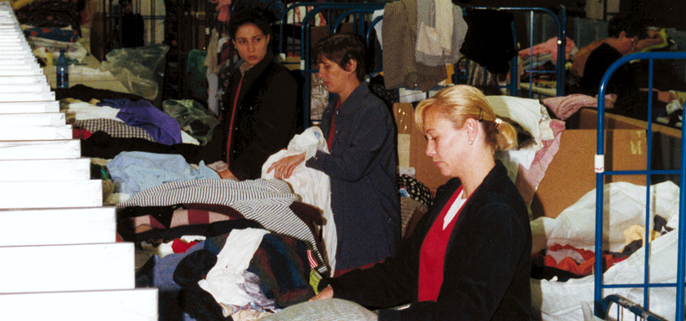Old Textiles: Benefits of Reuse and Recycling
In Europe, a new life-cycle assessment revealed that the reuse and recycling of old clothing are economical and ecological.
As reported by EuRIC, the European Recycling Industries’ Confederation, a new life-cycle assessment (LCA) commissioned by the European textile reuse and recycling industry has confirmed the significant CO2 and water savings of reusing textiles compared to producing new clothing. “The environmental impact of reusing textiles is 70 times lower, even when accounting for global exports for reuse including transport emissions.”
More specifically, the study would reveal that three kilograms of CO2 are saved for each high/medium-quality clothing that is reused, while only a mere 0.01 percent of the water used to produce new clothing is required for reuse. “These results come on the back of the EU launching its Strategy for Sustainable Textiles and requirements for Member States to start collecting textiles separately by 2025,” EuRIC pointed out. The study would confirm waste hierarchy assumptions on the environmental benefits of reuse over recycling, in the case of low-quality clothing, typically entirely composed of polyester. However, recycling also has comparative environmental benefits when consumers are less likely to purchase second-hand clothing.
“Regrettably, around 62 percent of used clothing and textiles end up in household waste meaning valuable textiles are likely to be incinerated or landfilled. The European textile reuse and recycling industry envisages a circular textile value chain where every piece of clothing is reused in an optimal way and/or recycled,” Mariska Boer, President of EuRIC Textiles. “This study endorses the environmental benefits of a global market for textile reuse and recycling’s potential to tackle the rising amounts of low-quality and non-reusable clothing.”
The study also emphasized recommendations to policymakers, calling for initiatives that accelerate investments in state-of-the-art textile recycling facilities globally. In particular, innovation in fiber-to-fiber recycling will be essential to keeping textile fibers in the loop as volumes of non-reusable clothing are set to increase dramatically. “The study also notes the importance of eco-design criteria that enhance the lifespan of clothing before there is a need for recycling as well as rules that mandate detailed sorting of high/medium-quality and low-quality textiles,” EuRIC informed.
(Published in GLOBAL RECYCLING Magazine 1/2023, Page 37, Photo: MSV-Archive)





